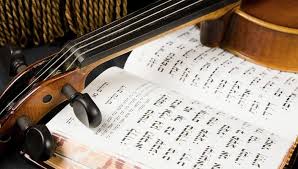Around this time last year, we presented a short history of the piano, tracing its most rudimentary origins as far back as the monochord in ancient Greece. Many piano historians, however, will point to Bartolemo Cristofri’s invention of the pianoforte as being the most prominent relative to the modern piano. But the evolution of the piano is only one part of why it remains an extremely popular instrument across the globe today. Throughout history piano teachers have spread the knowledge and love for the instrument, through one-on-one instruction as well as children’s music studio classes and programs.
Played Mostly by Women, yet Dictated by Men
In the early 1770s, keyboard instruments such as the harpsichord were played mostly by women and girls who were fortunate enough to come from wealthy families. As the pianoforte began to take over from the harpsichord, this population of talented women evolved along with the technical and commercial advances in the instrument. However, as was with most things in society at the time, men dominated the most lucrative aspects of music. Men were almost exclusively the only concert pianists, and as women were not allowed to attend university, men were considered the only suitable teachers and scholars for most subject matter of the time.
The Earliest Piano Teaching Methods
In earliest days of piano instruction, the most prevalent method of teaching was the master/apprentice model. It is as such that Carl Czerny, a pupil of Beethoven, was the first to conceive and create an entire library of teaching pieces for piano based on numbering the fingers and creating exercises based on that numbering. In the mid to late 1800s, several other great piano teachers emerged, with somewhat different schools of thought to deal with the emerging trends in musical pieces but based on the “classic” or “old school” approach developed by Czerny. As the popularity of the piano grew and the need for more piano teachers rose, women began to teach piano. In fact, by 1861, it appears that sixty percent of all piano teachers in London were female.
The Emergence of Group Piano Teaching
As the demand for piano instruction increased, teachers recognized the potential of teaching in groups. In the early 1800s, German Musician Johann Bernhardt Logier began instructing piano classes in groups. Often containing up to 30 students, these classes ranged from beginners to the more advanced. Educators from America and Europe attended Logier’s classes and then introduced group piano teaching to their own countries. Many famous nineteenth century pianists taught in a group class setting, including Liszt, Chopin, and Clara Schumann. It is believed that the first group piano classes in America can be traced to girls’ schools in the Southern United States. As the United States led the world in piano production in the early nineteen hundreds, elementary school group programs grew tremendously. Unfortunately, due to the depression, World War II, and the invention of the radio, school group piano programs suffered a serious decline.
The Electric Piano and the Internet
The introduction of the electric piano created a new opportunity for piano teachers and group classes. Because of their relatively small size and weight, teaching group piano became much more cost efficient. As with most industries, the Internet has had a substantial impact in how music instruction is distributed and marketed. While there are thousands of options to learn piano online, most professional musicians will point to the importance of in-person instruction for pianists (and other instruments) at all levels. As children’s group piano classes continue to be offered in person, the importance of that teacher pupil relationship is reminiscent of the very first piano teaching model of master and apprentice.










